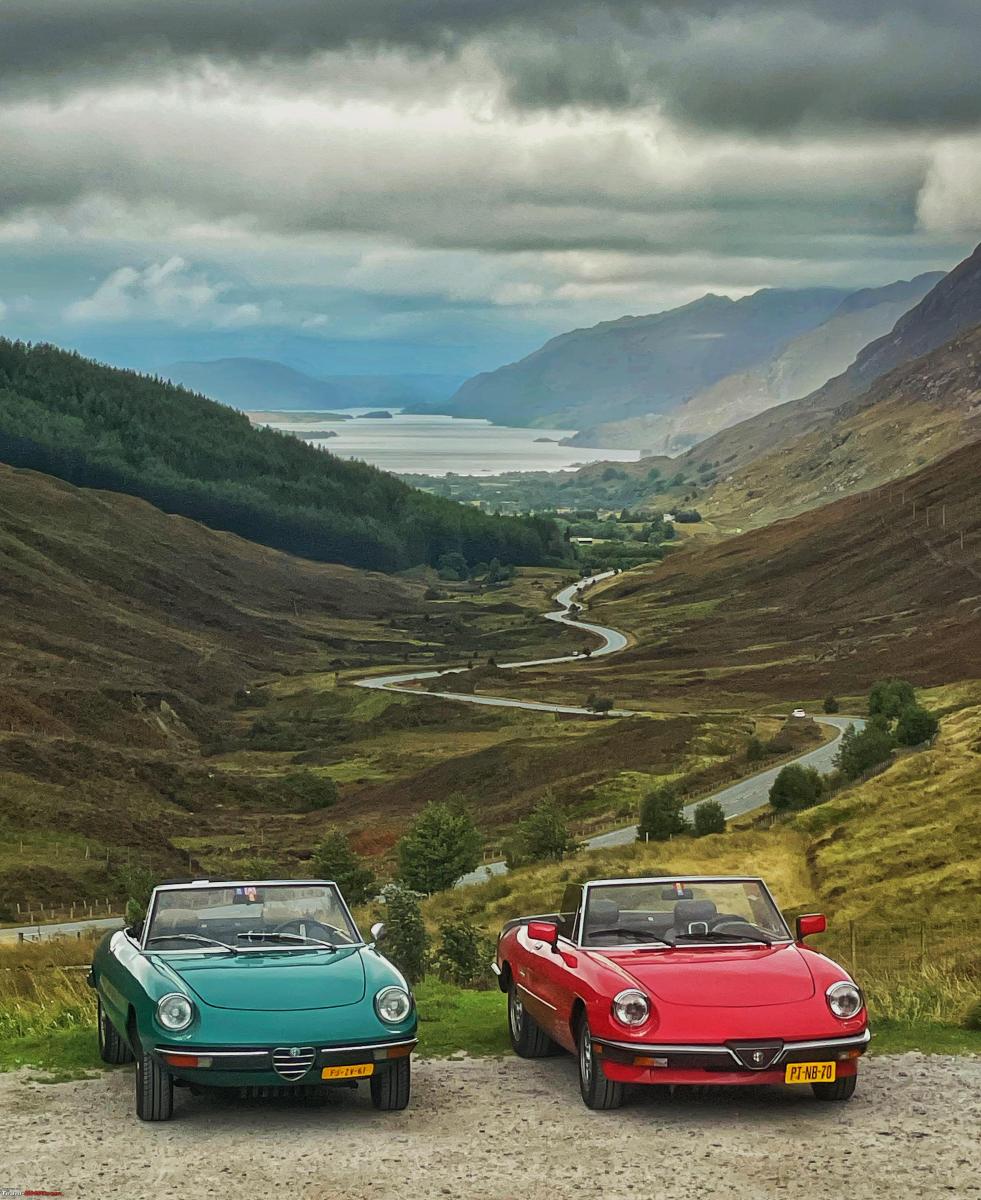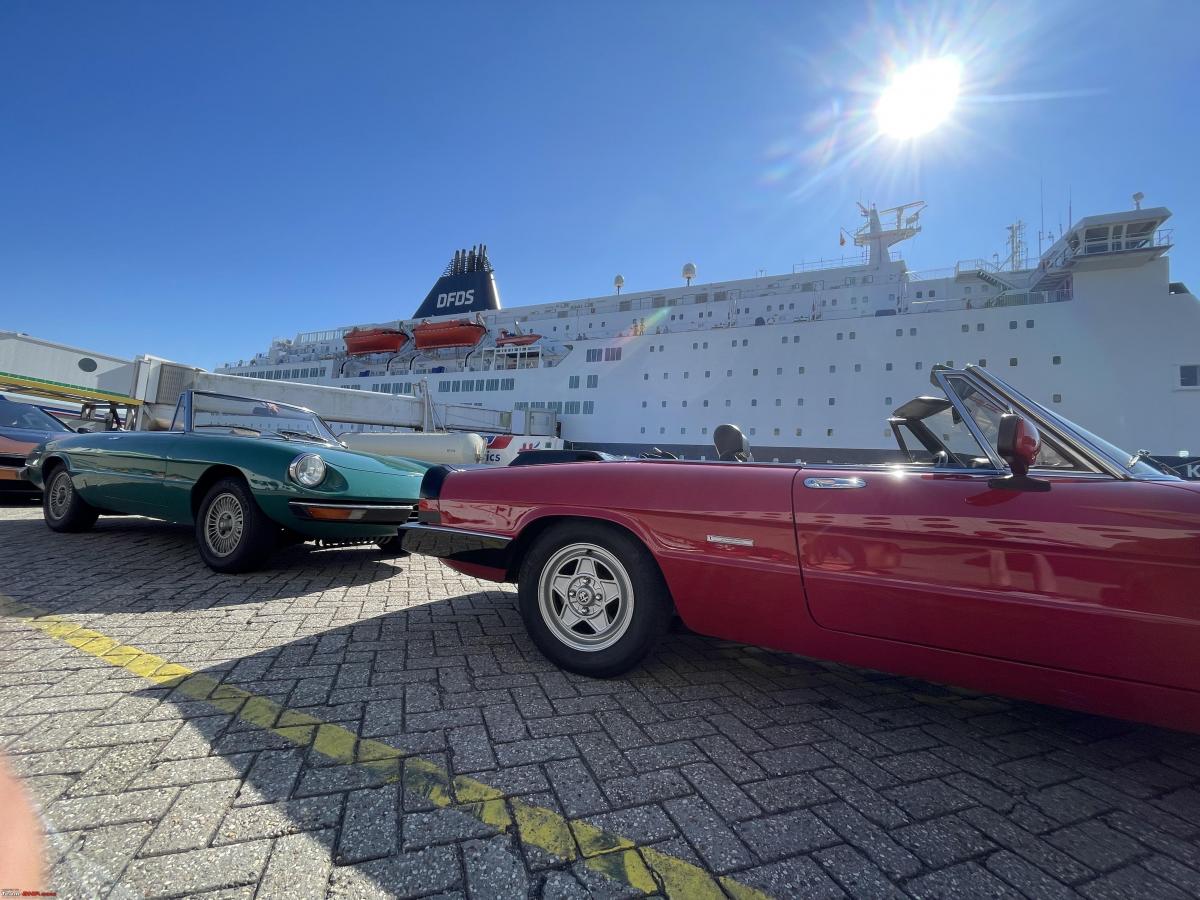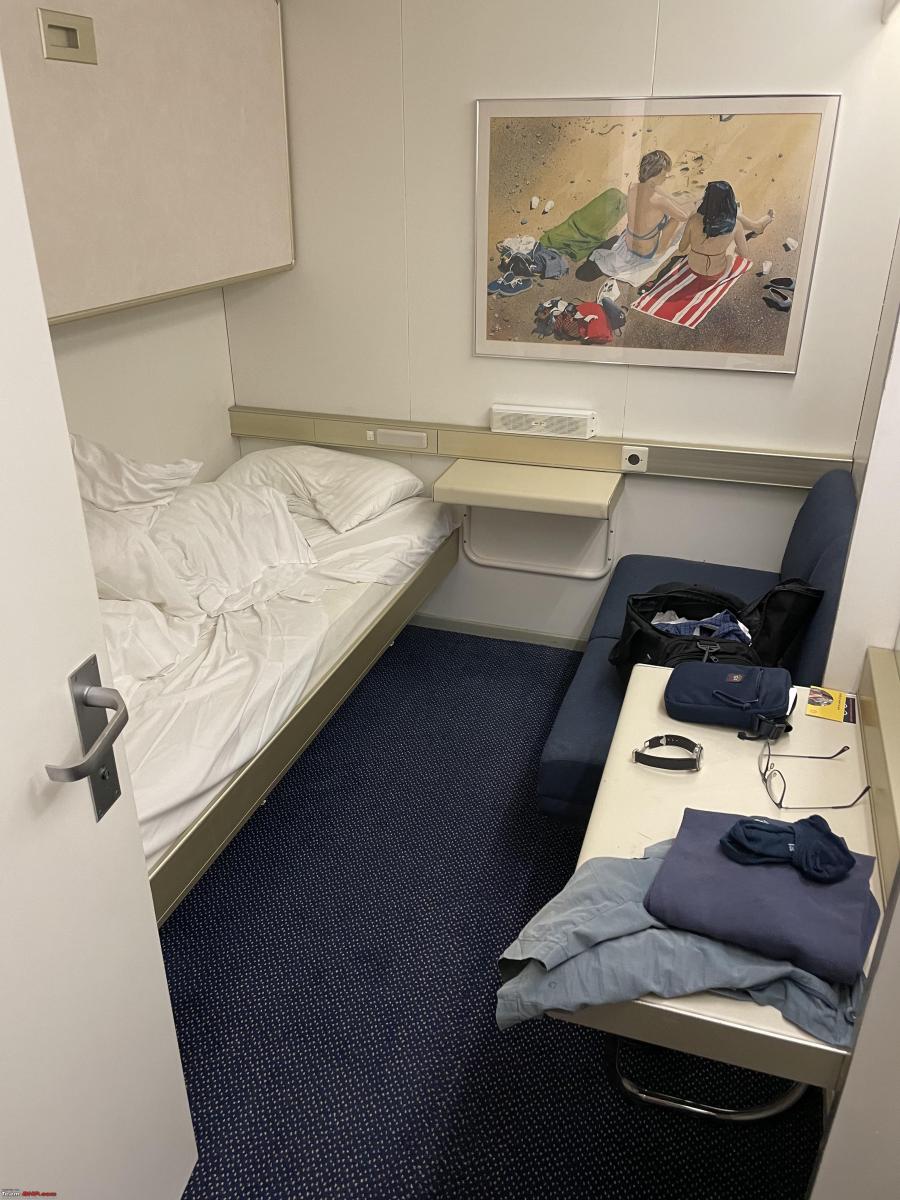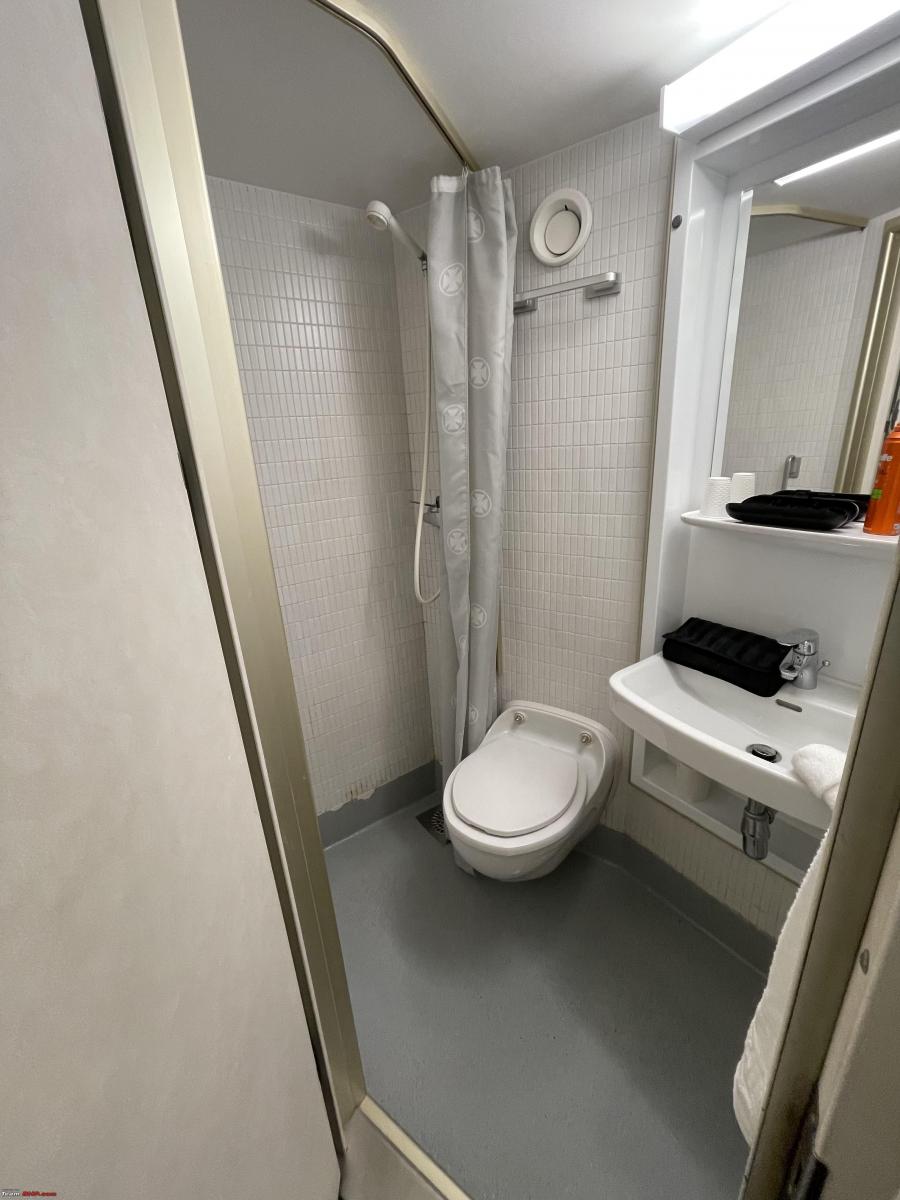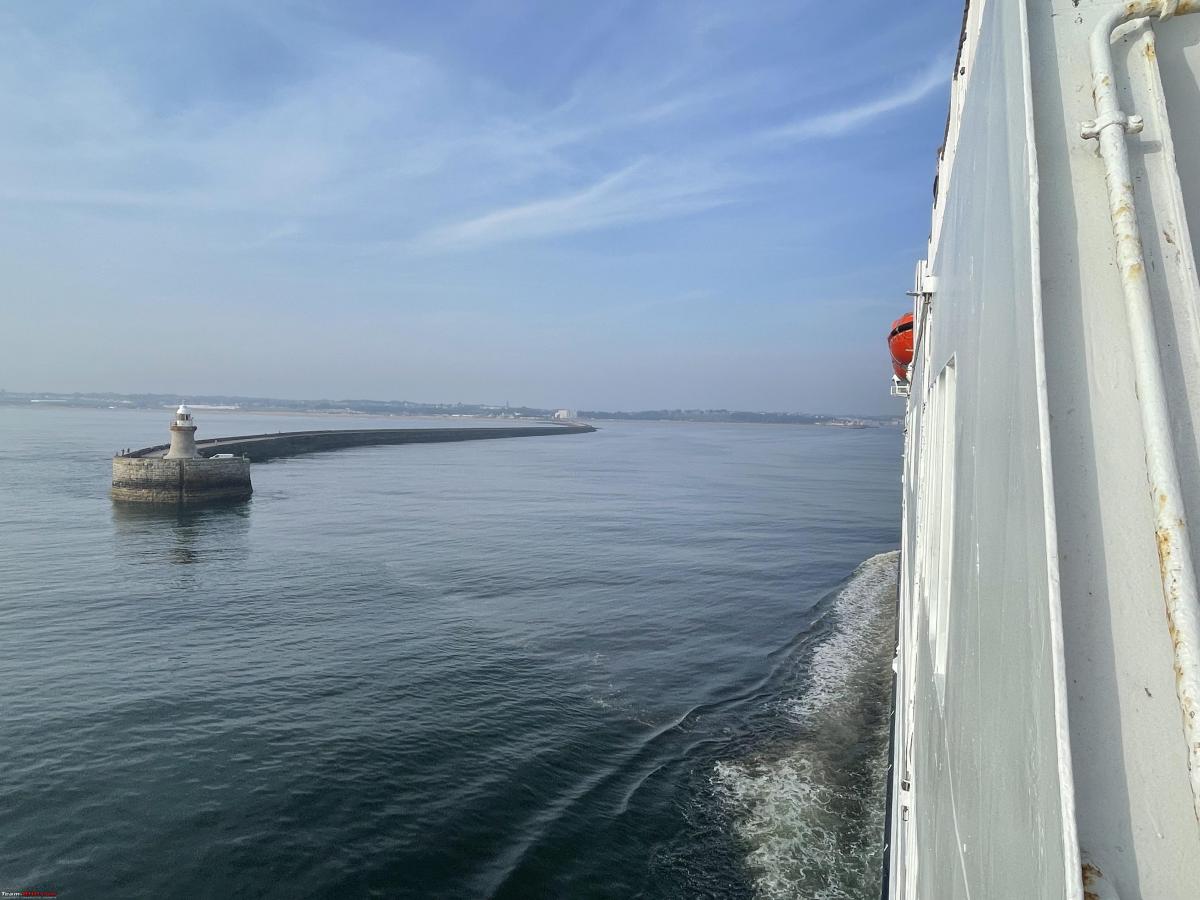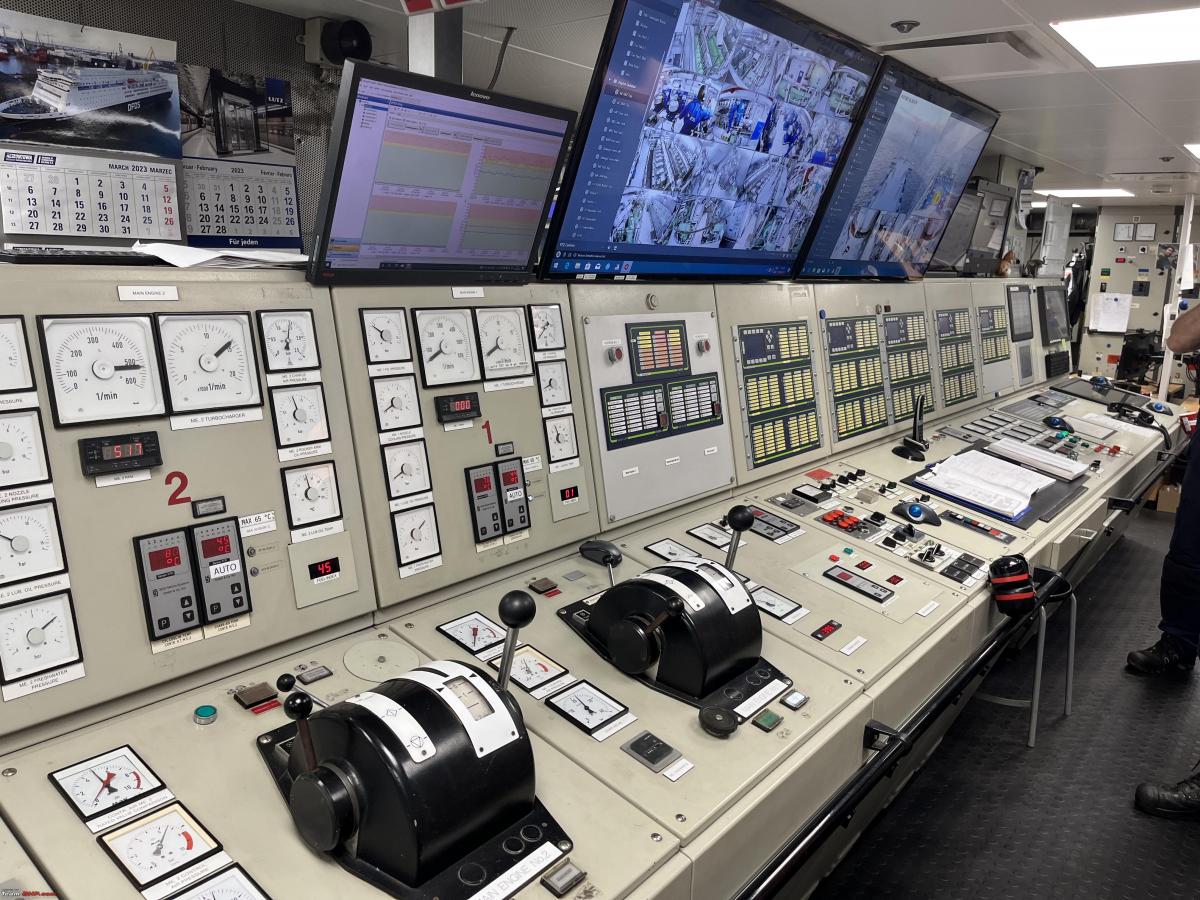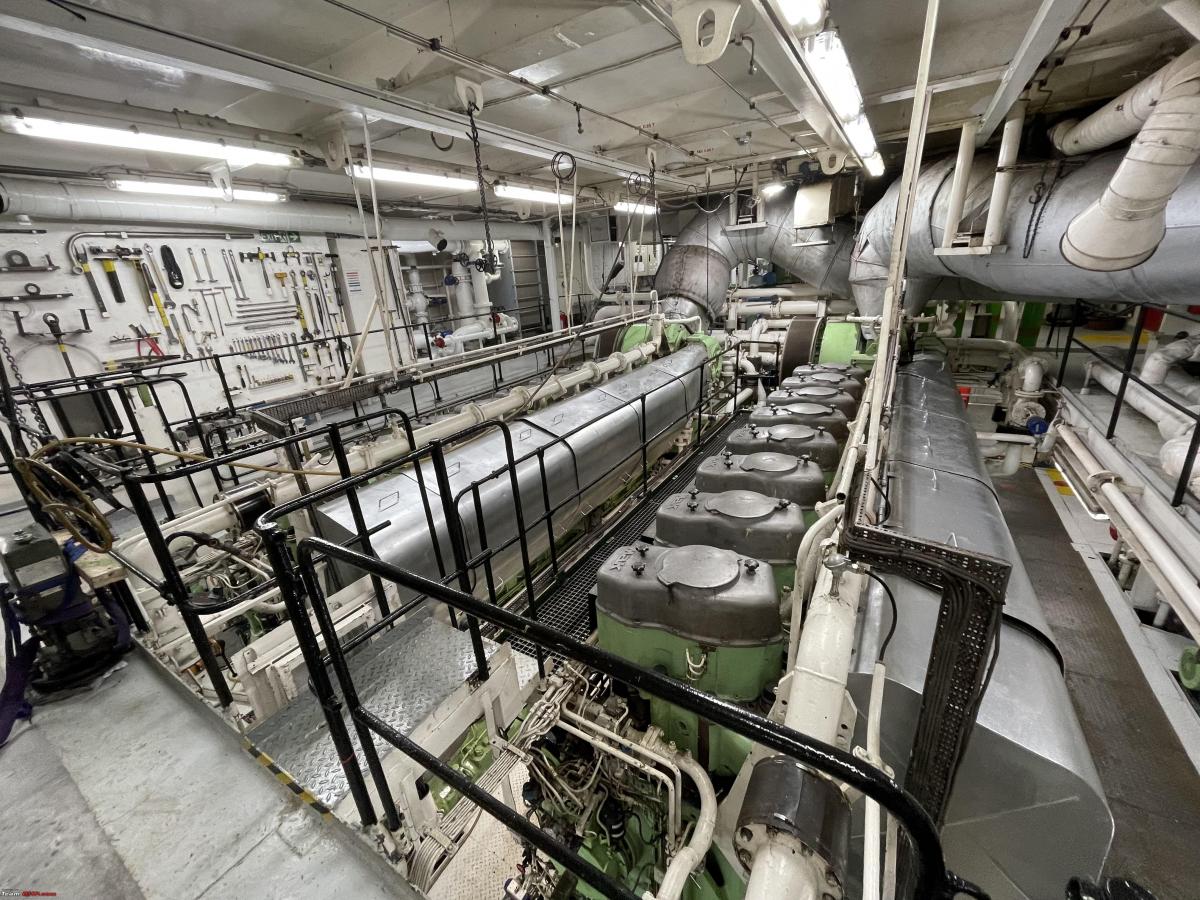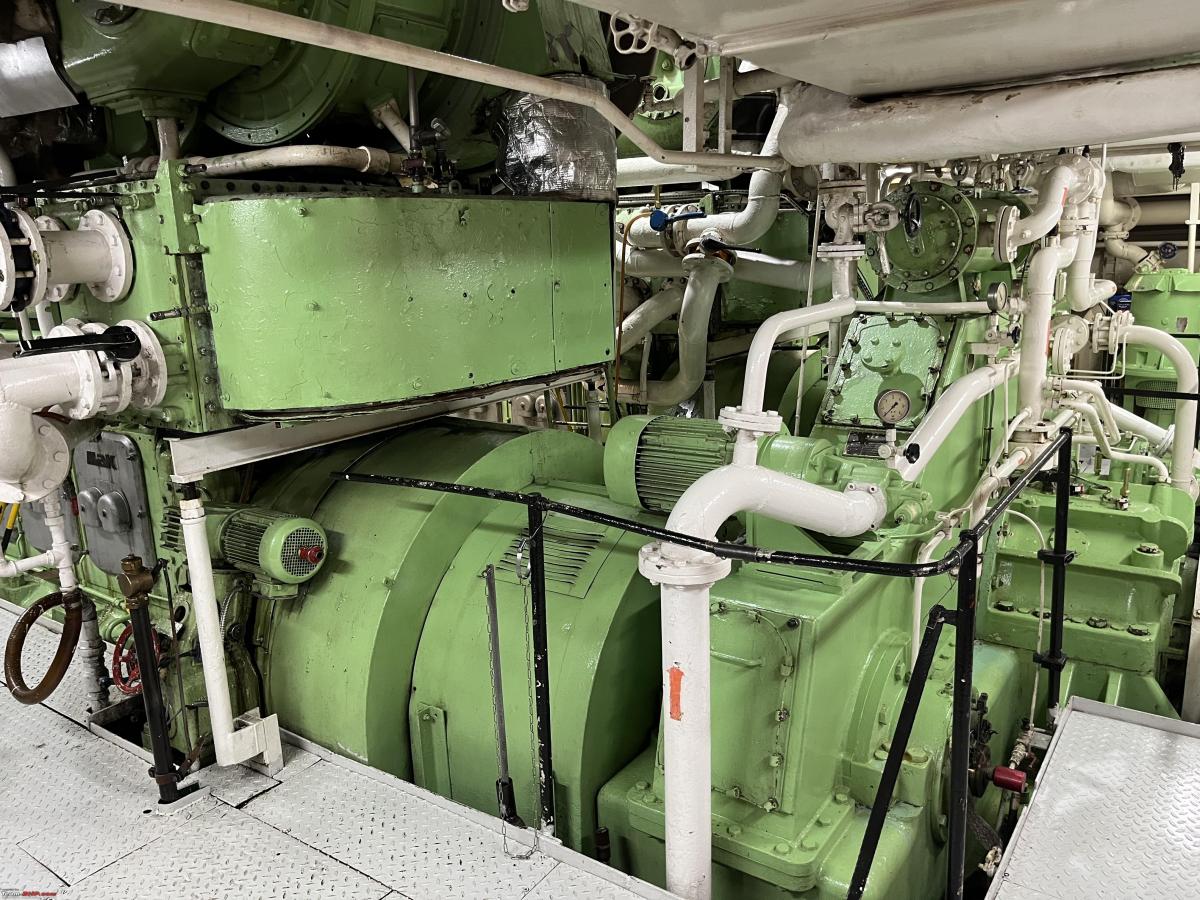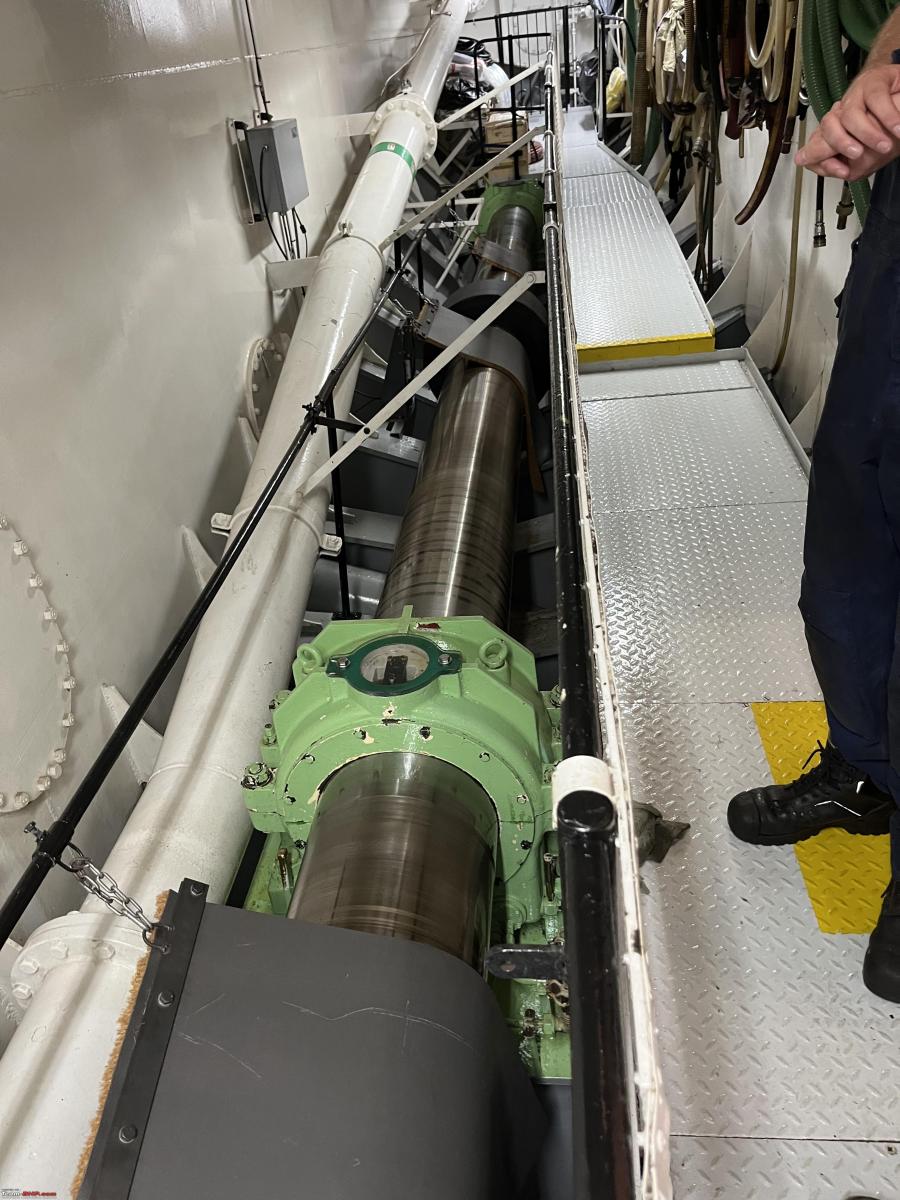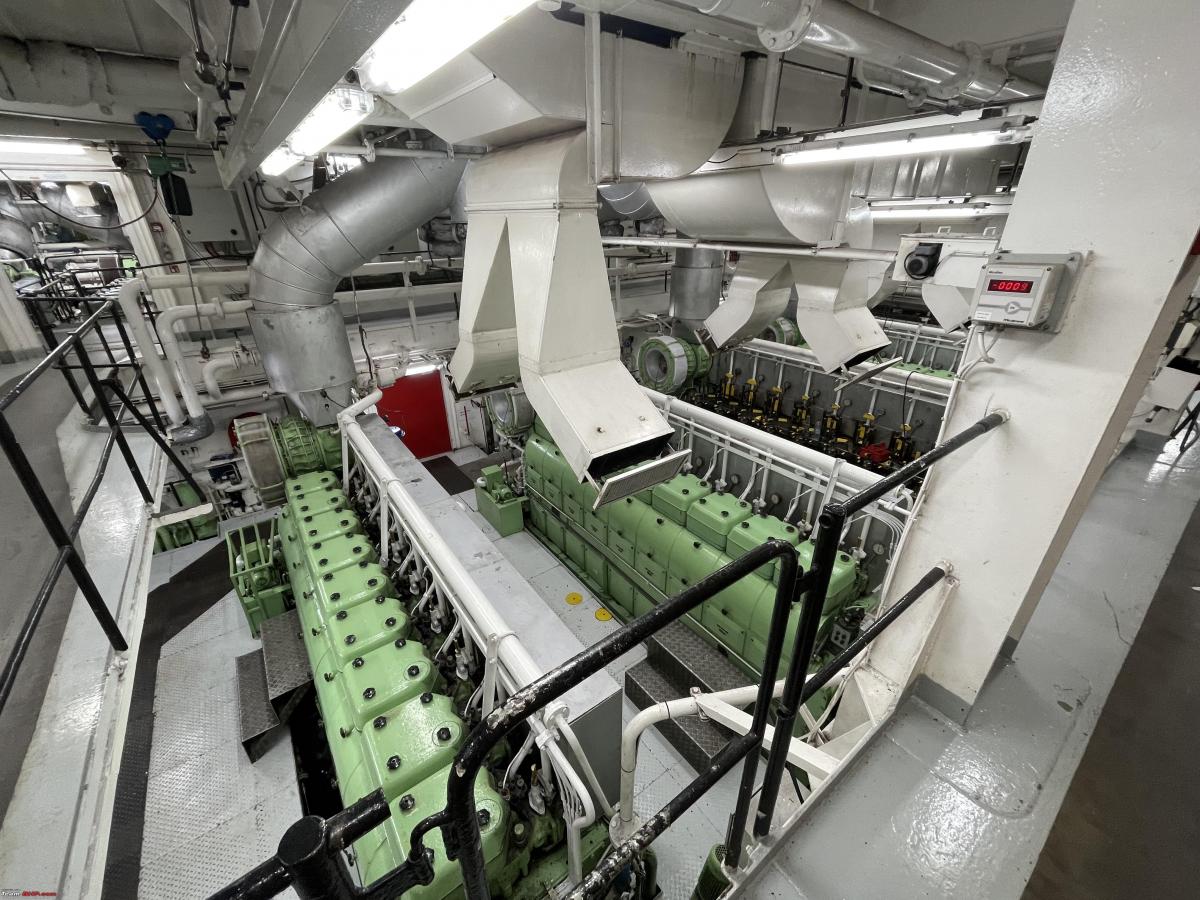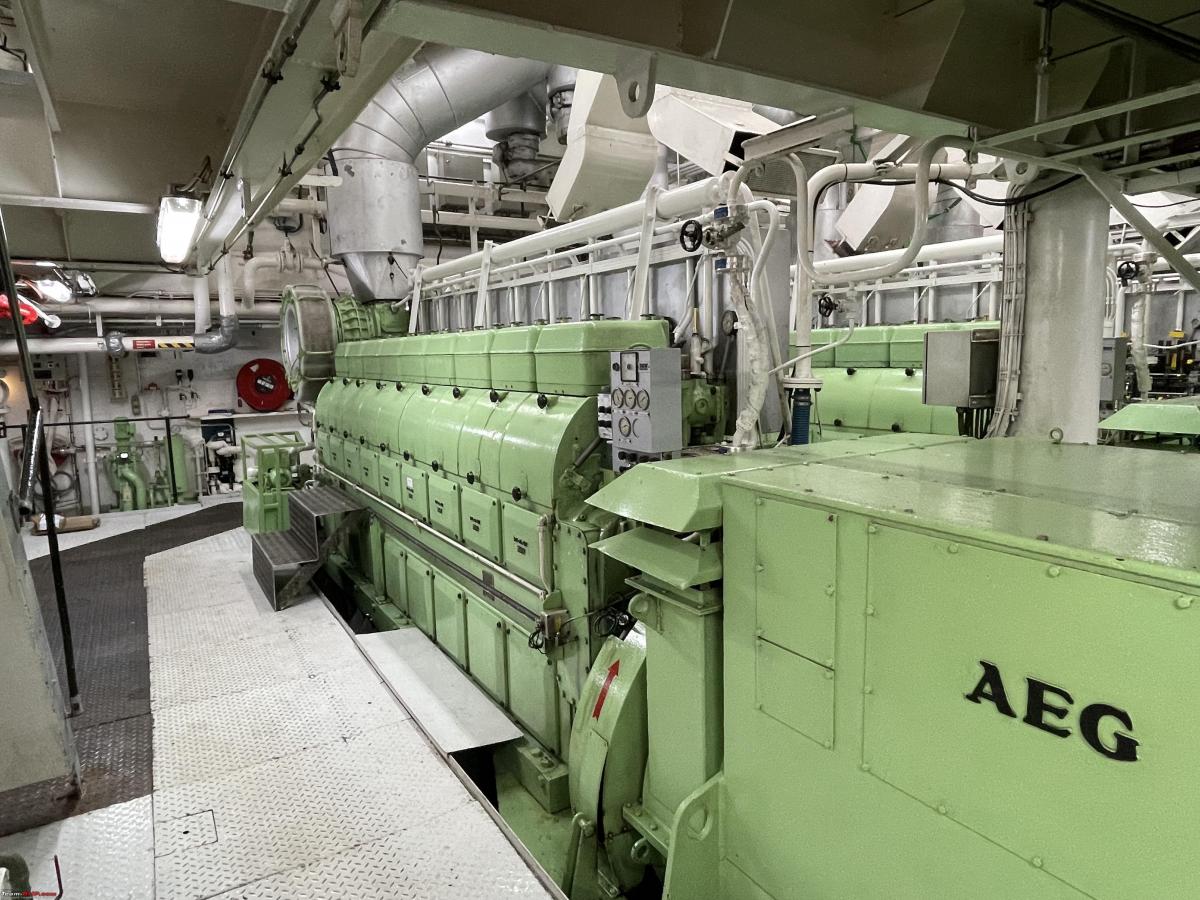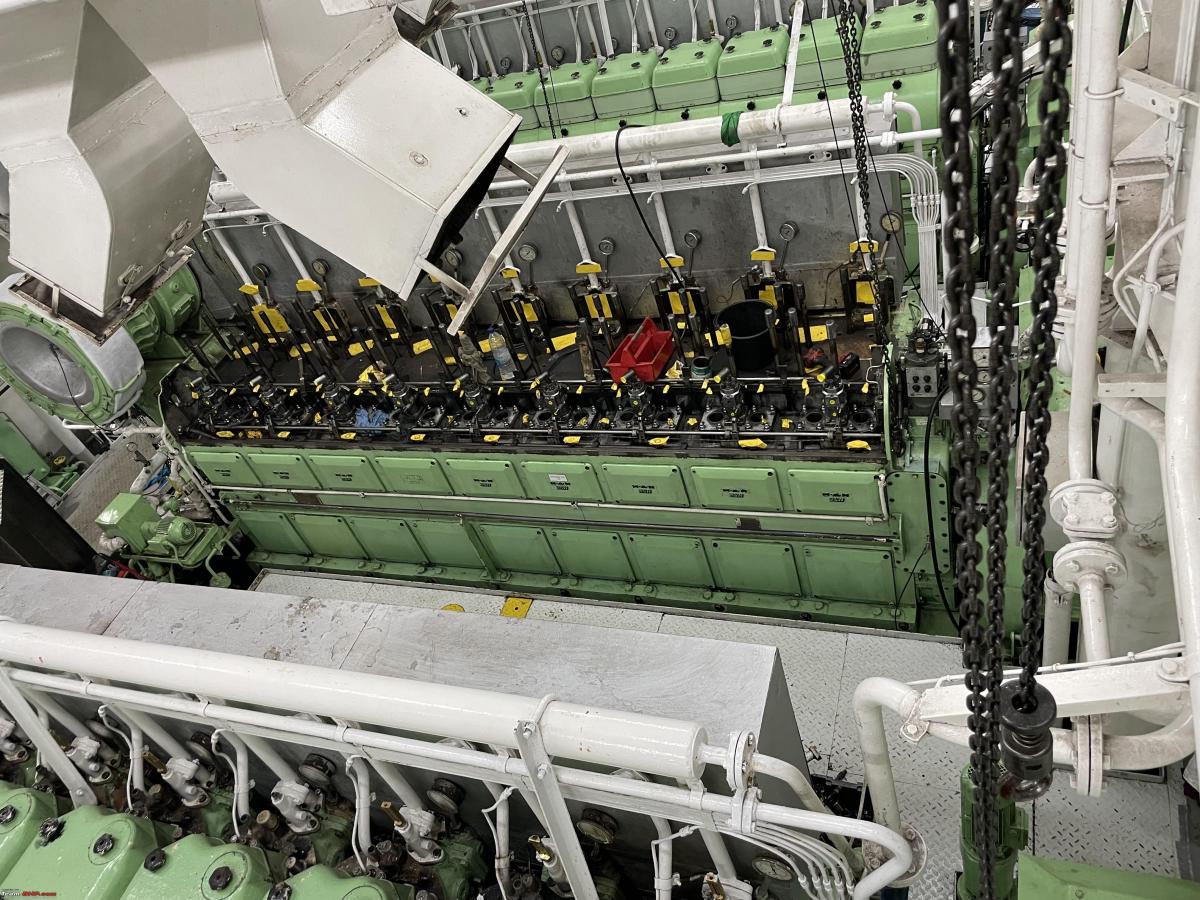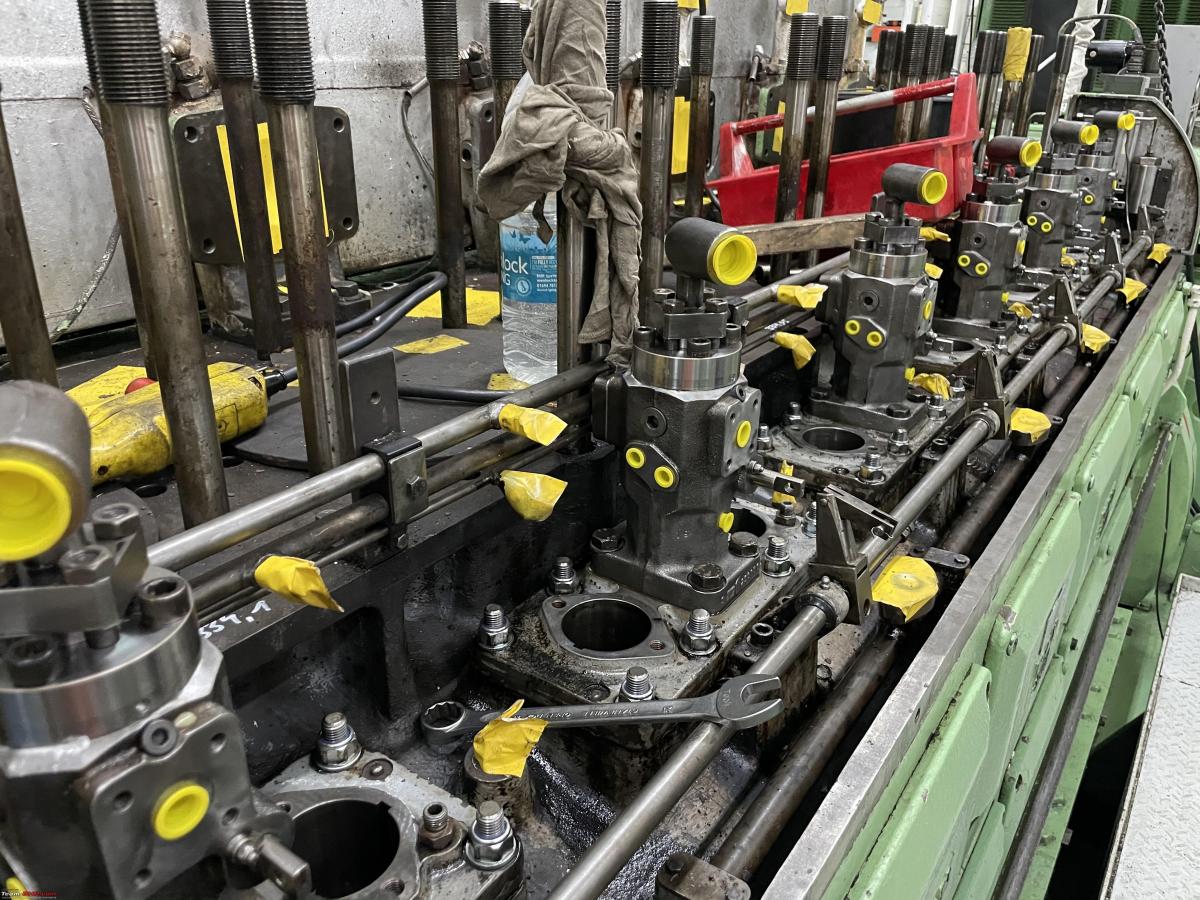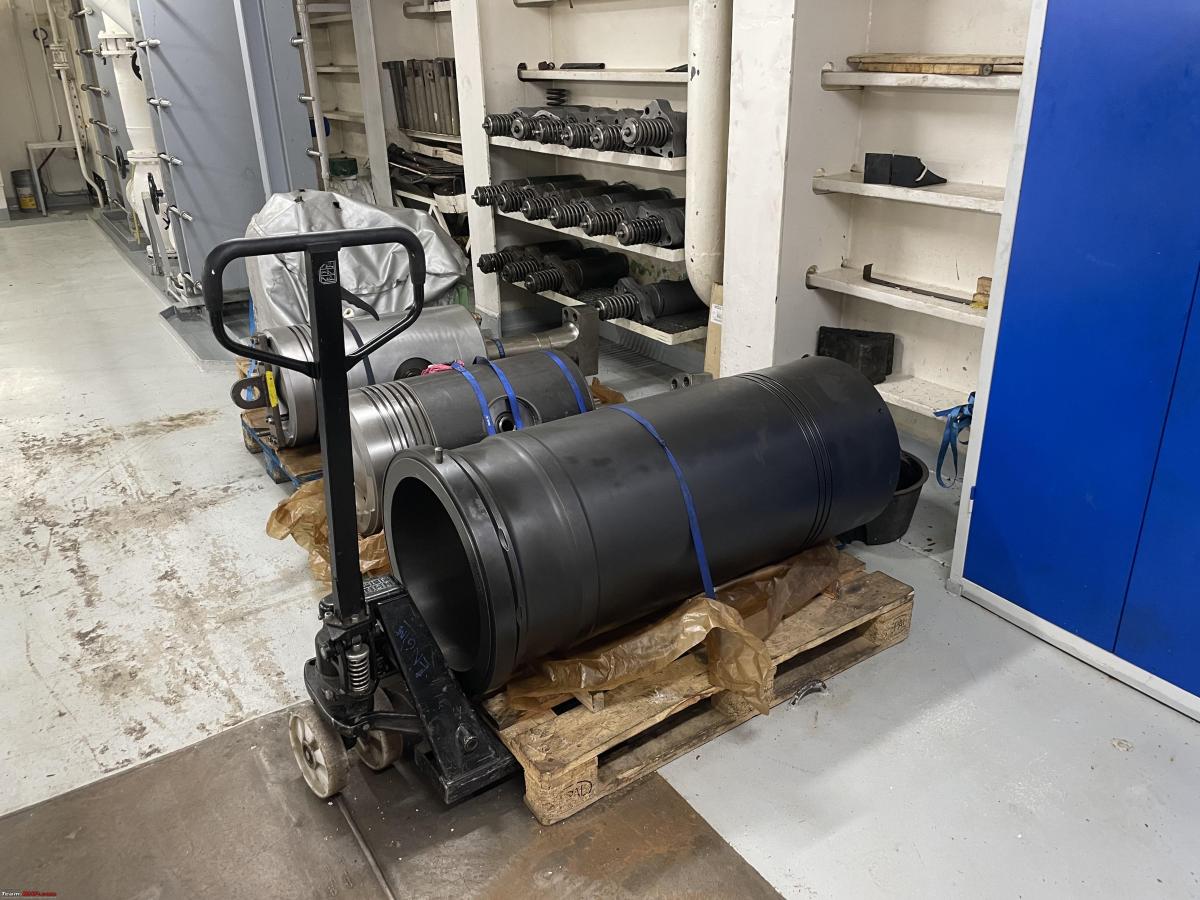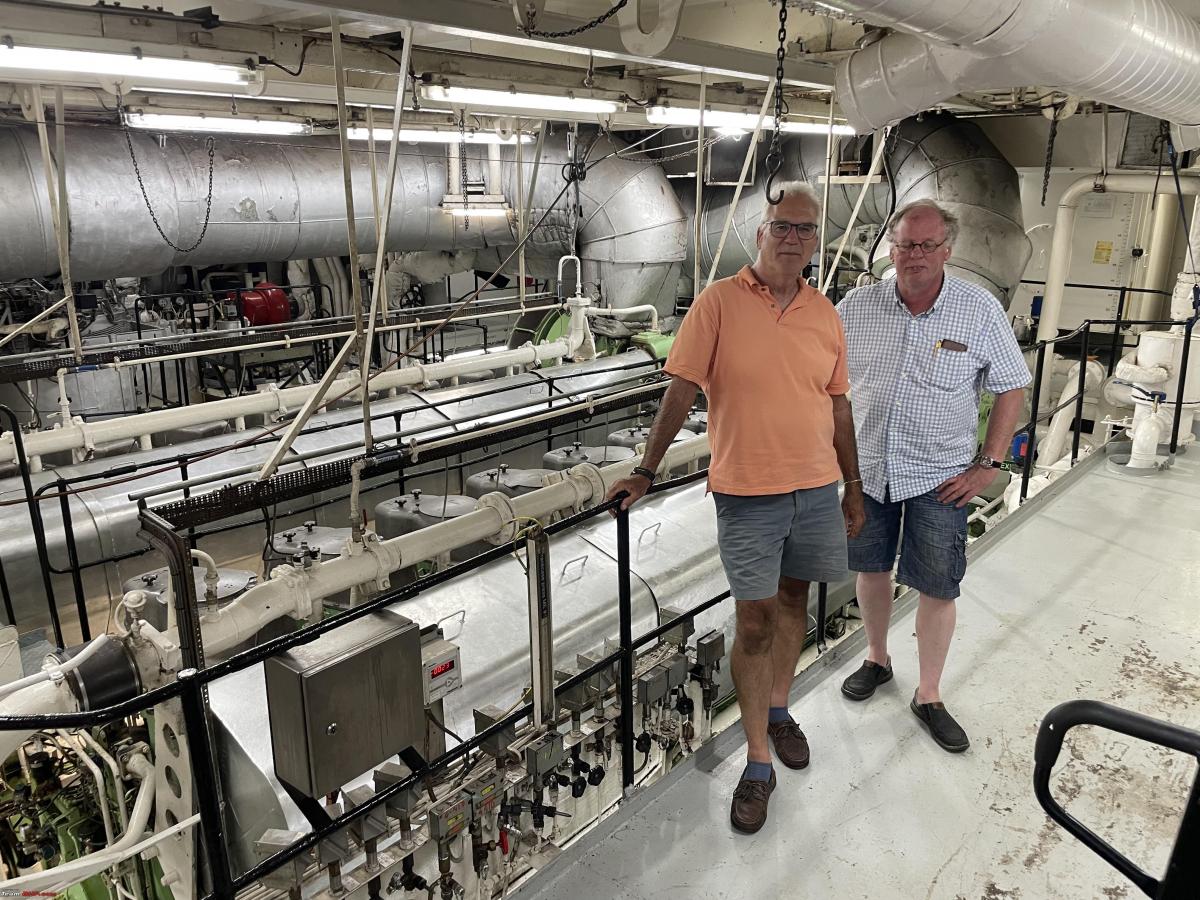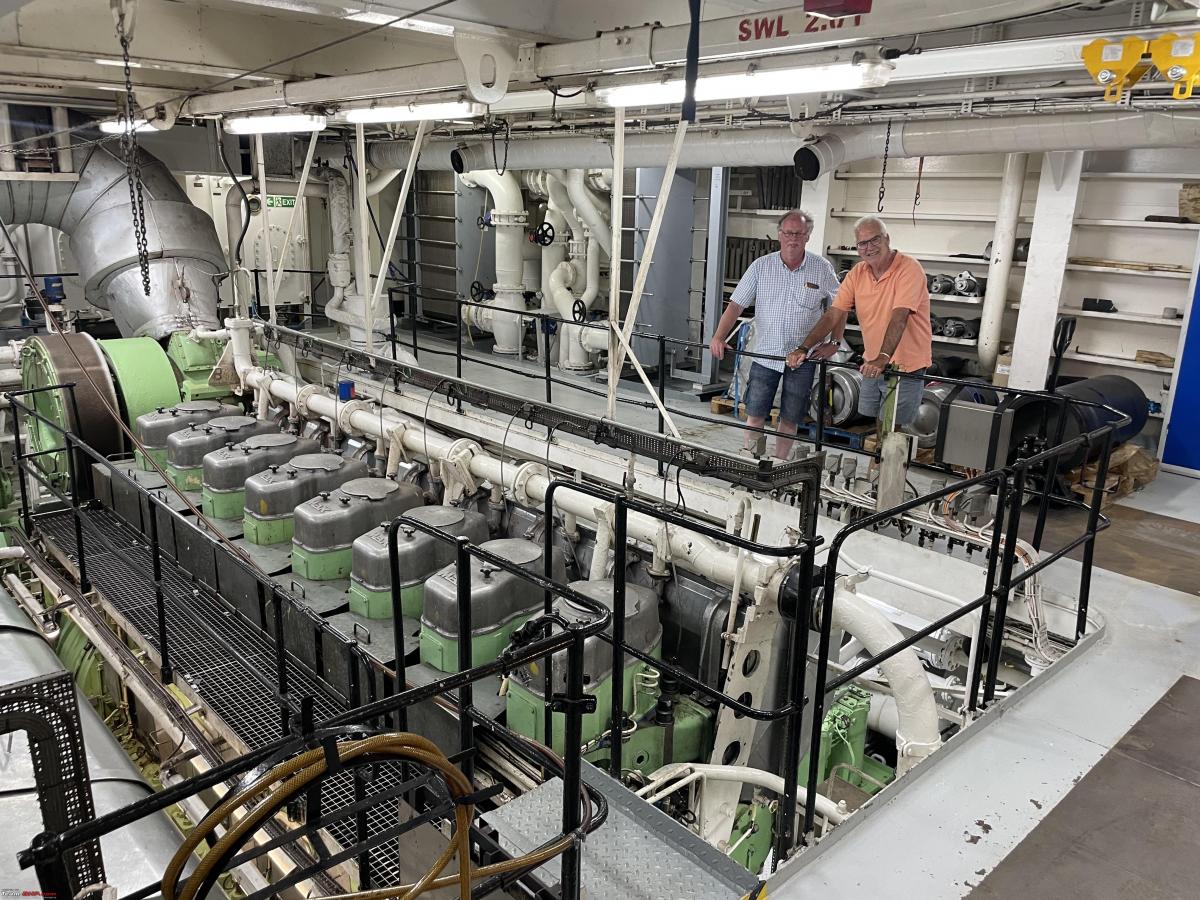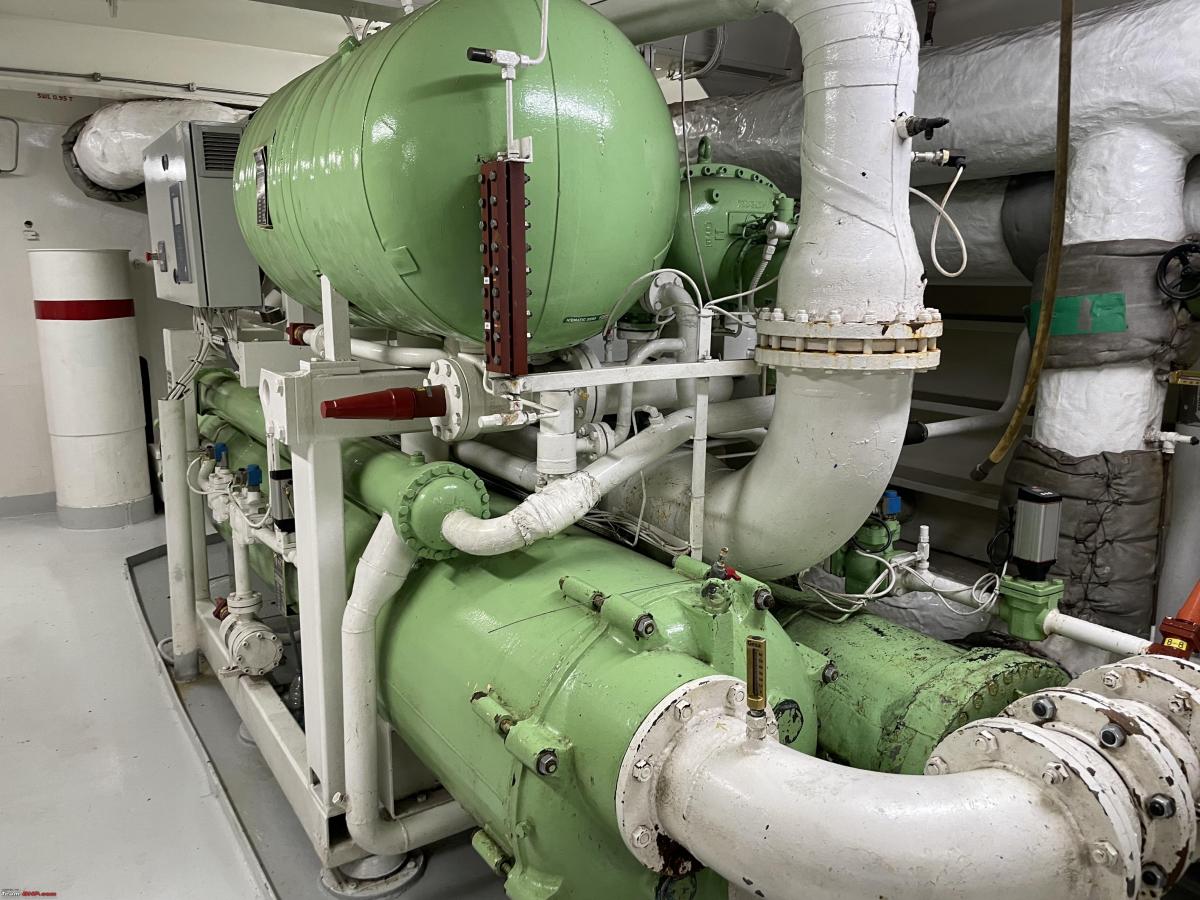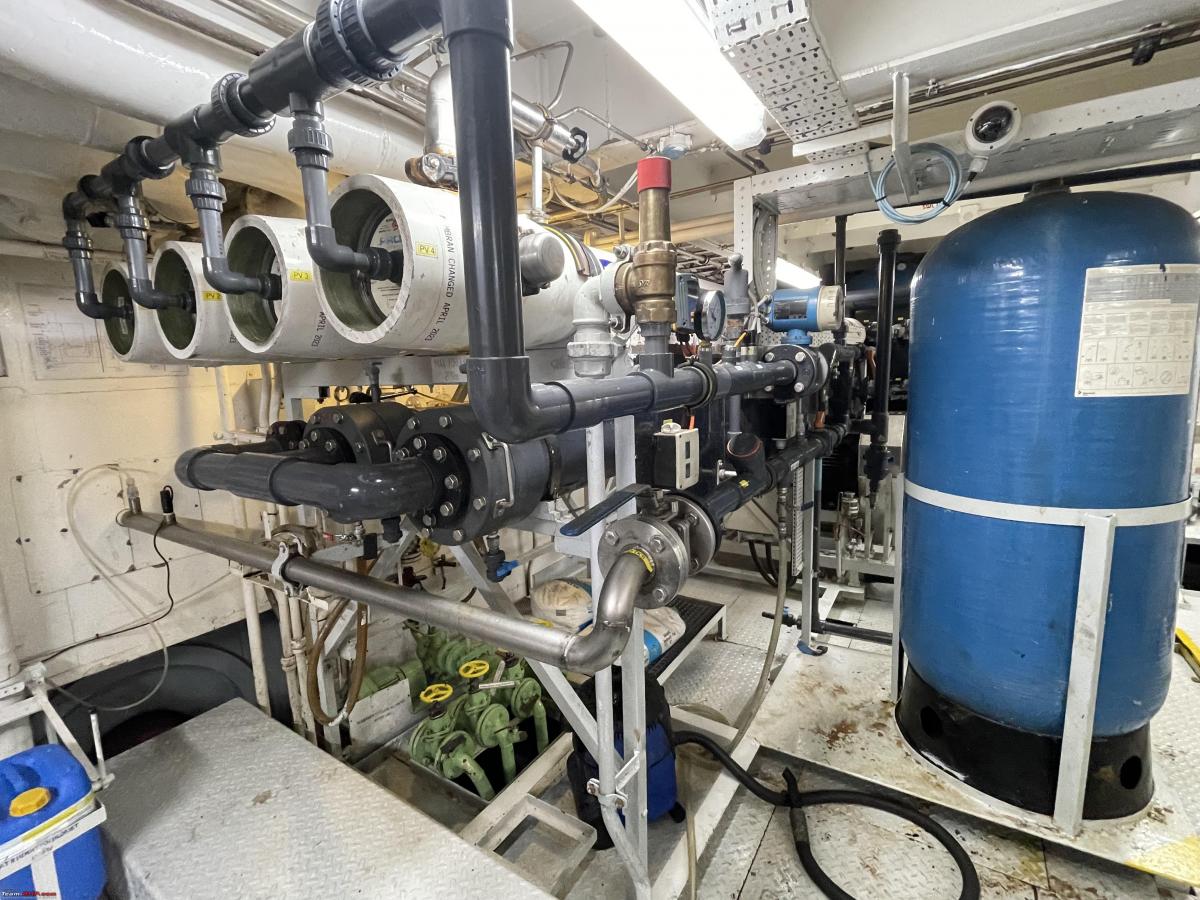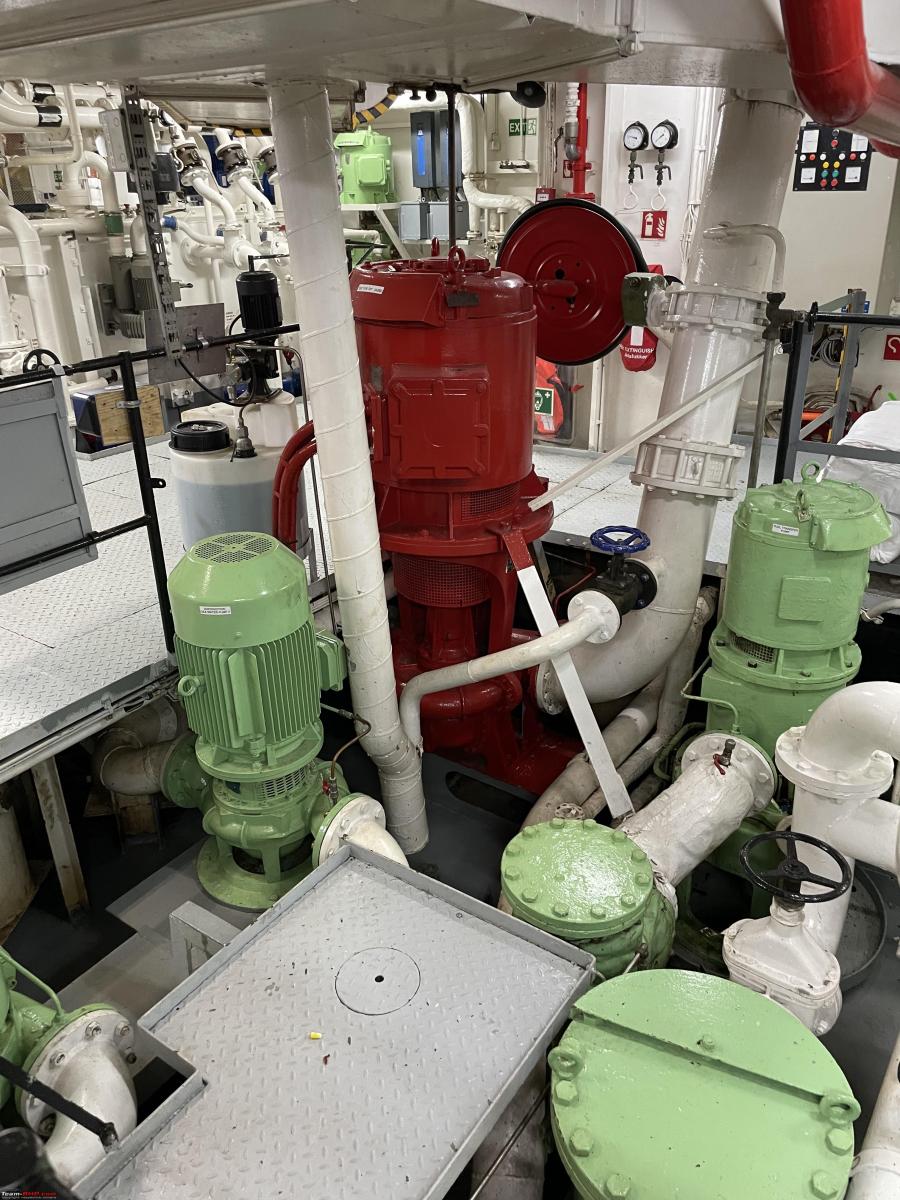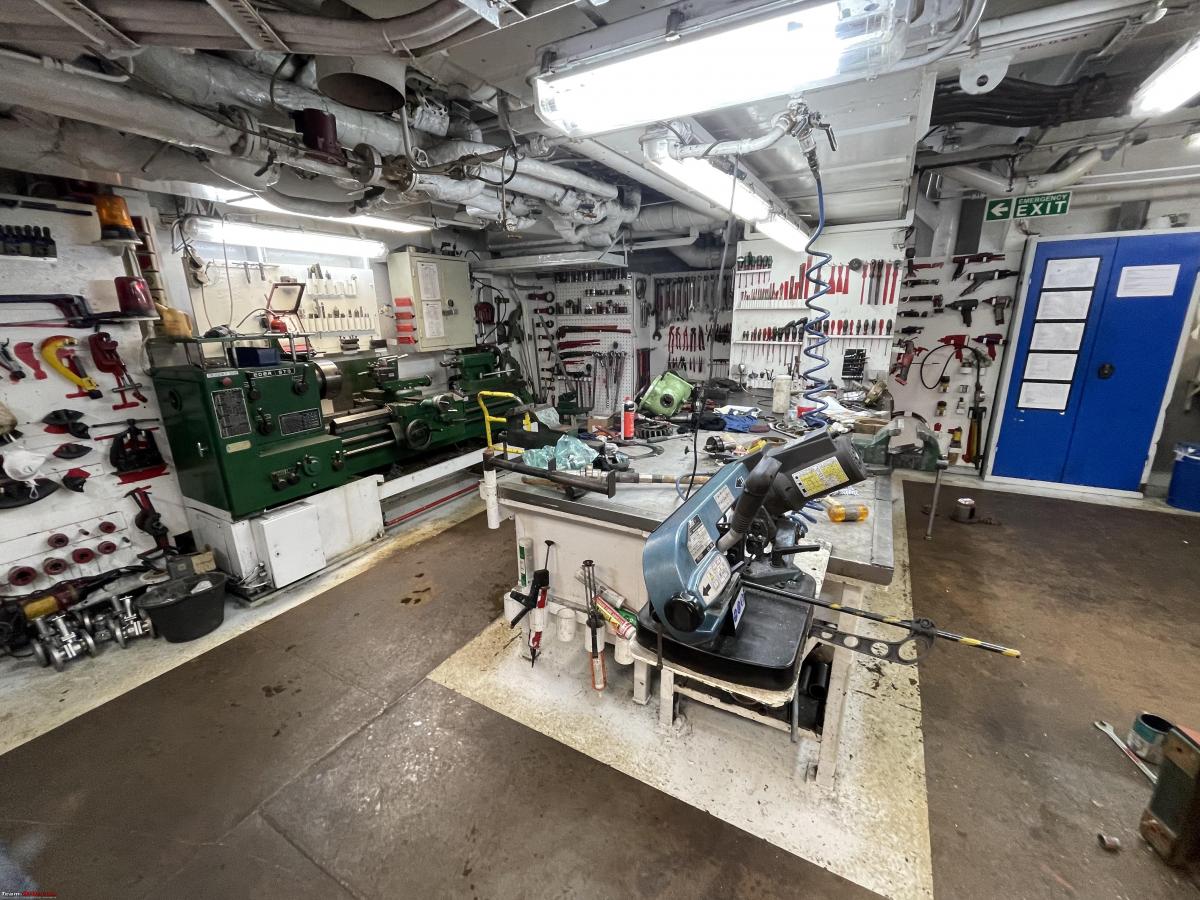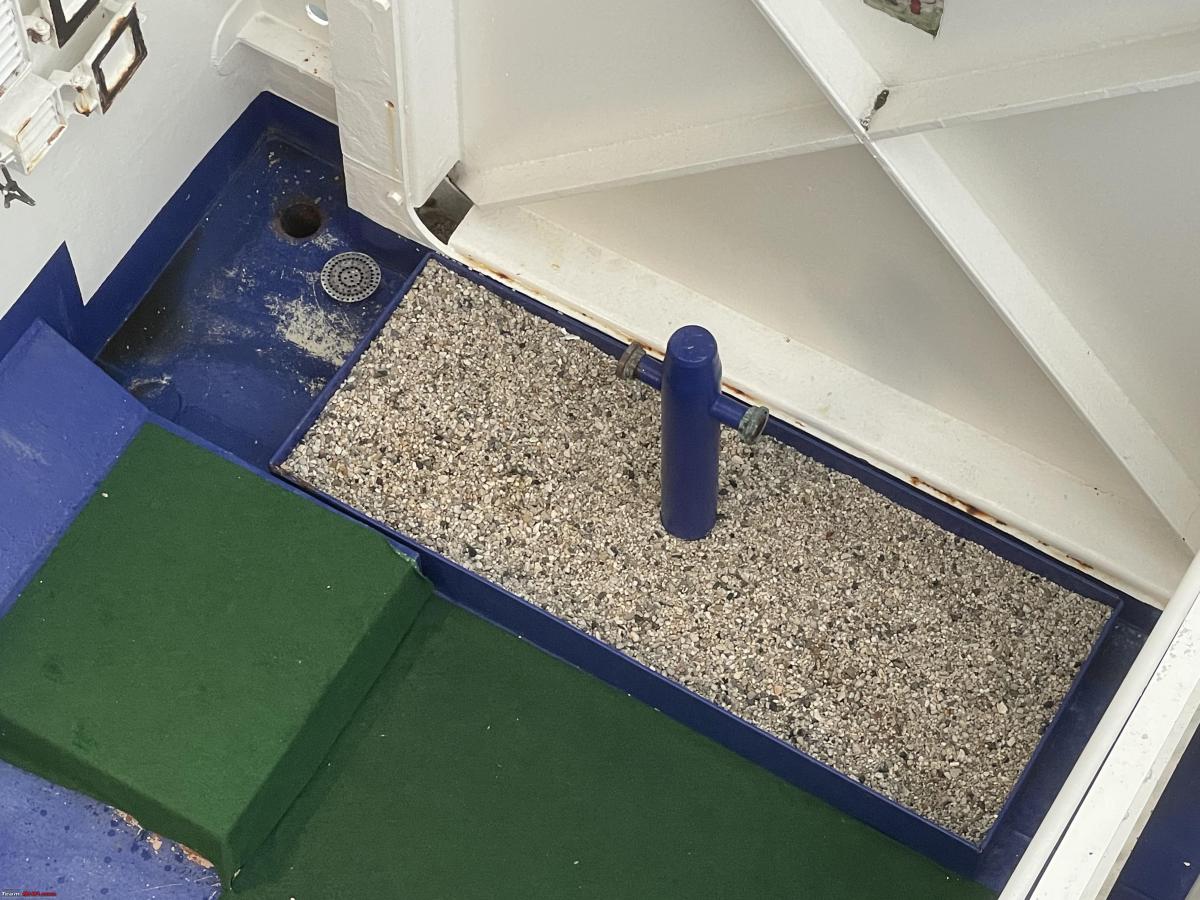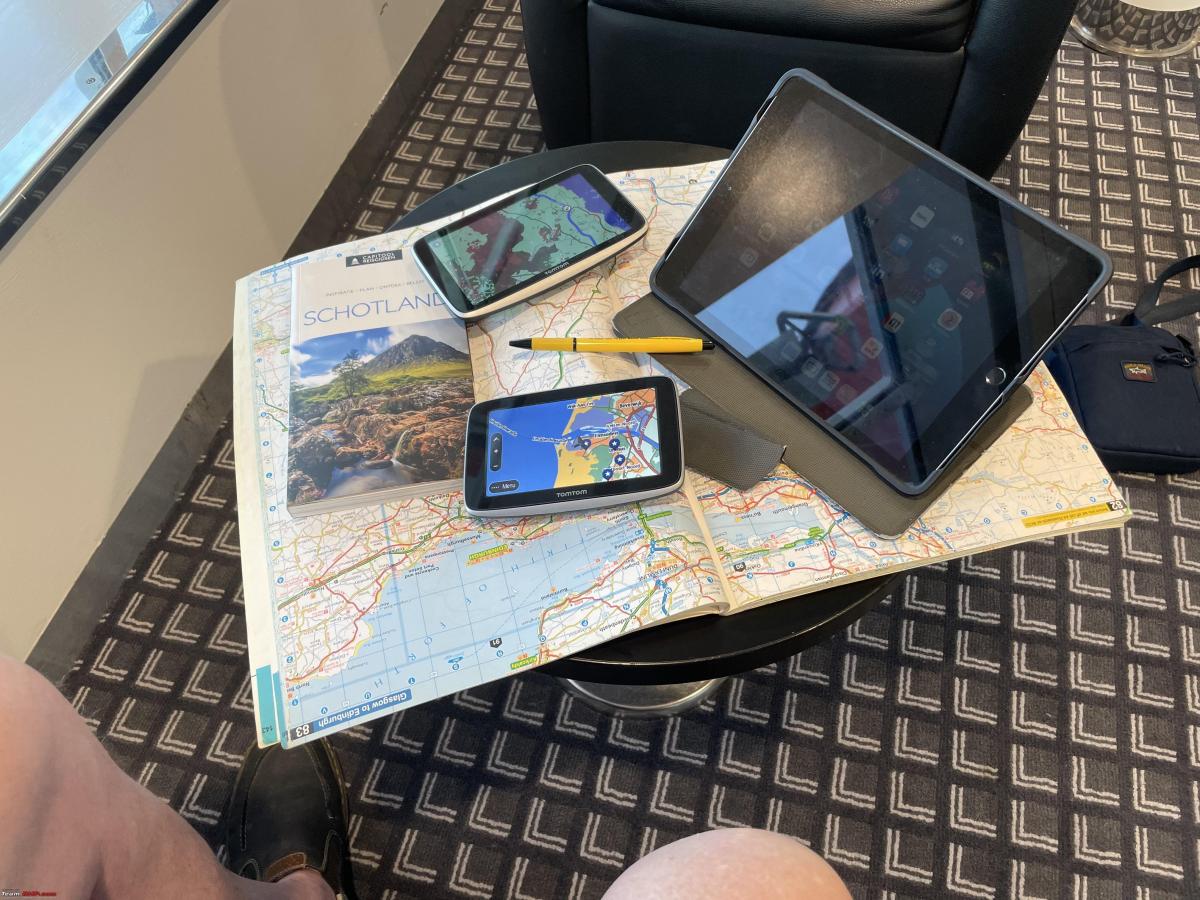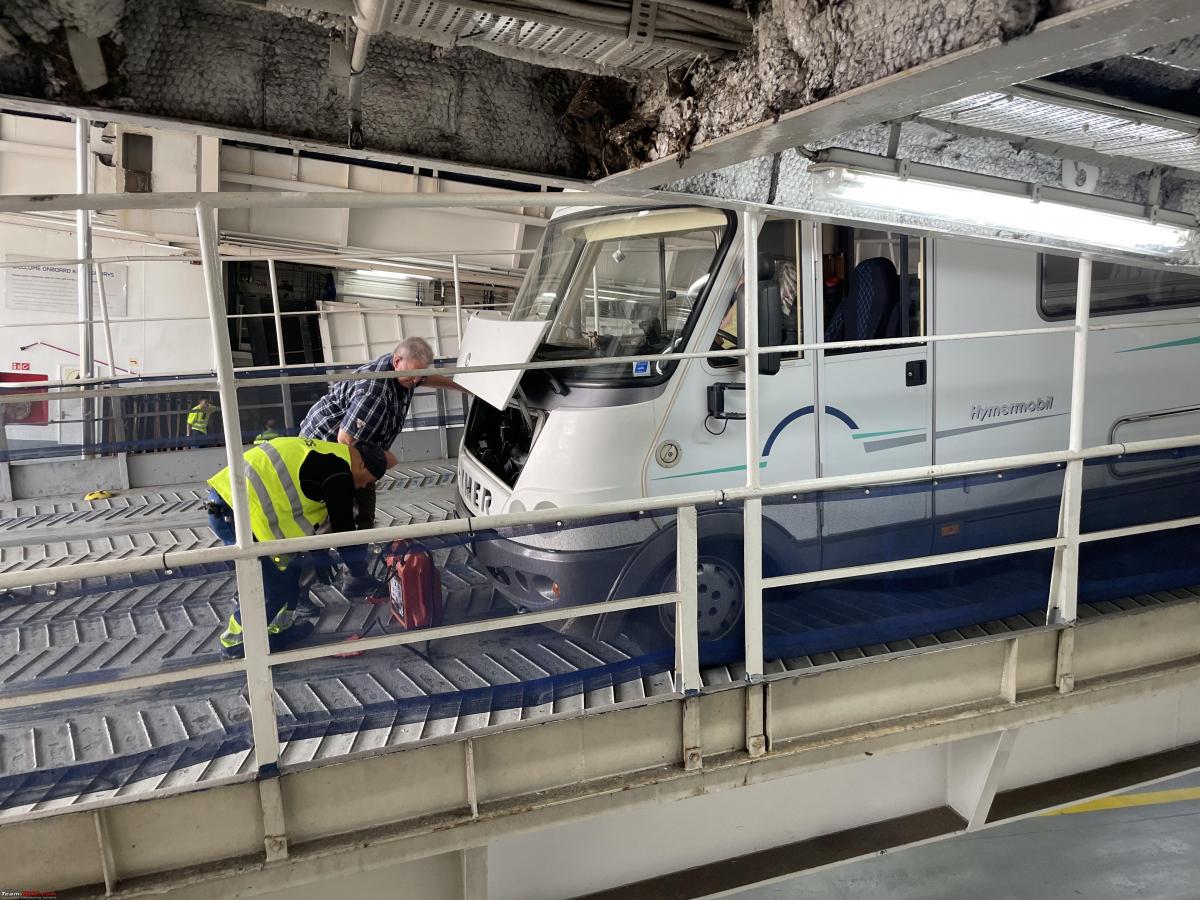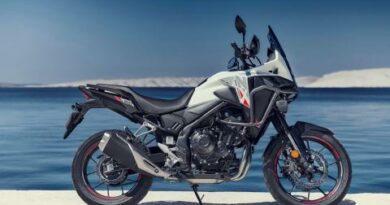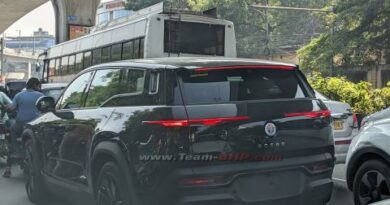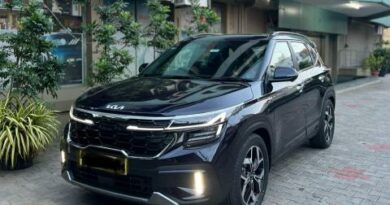Travelling from Netherlands to Scotland via a ferry in two Alfa Romeos
We had booked a return ticket for two and two cars, two cabins, a 3-course dinner and breakfast for which we paid almost Euro 600 (INR 53000) per person.
BHPian Jeroen recently shared this with other enthusiasts.
Every year my best mate Peter and I take our Alfa Spiders out for a 4-5 day trip abroad. I have written about a number of our annual trips before. This year we decided to take a trip to Scotland.
We live in the Netherlands. There are various ways of getting to the UK from the Netherlands by car. I have mentioned the Stenaline crossing Hoek of Holland Harwich before. However, when you want to travel to Scotland, you want to take a ferry that takes you as North as possible. That means we booked our trip to IJmuiden Newcastle some 6 months ago. We left IJmuiden on Thursday the 7th of September, at 17.30 and were back in IJmuiden Wednesday 13th of September at 10.00 hours and some 1750 km of driving behind us!
These annual trips are about driving our Spiders and enjoying each other’s company. So we tend not to have a specific goal or destination in mind. We usually play it by ear. At breakfast, we usually plan where we want to be around lunchtime. At lunch time we plan for the rest of the afternoon and by about 16-17 hours we start looking for a place to sleep and eat.
IJmuiden is a Dutch coastal town, with massive locks that are the entry to Amsterdam harbour. There is also a small fishing harbour outside the locks. It is also used for various offshore activities/vessels and the DFDS ferry docks here as well.
As Peter lives in the North and I live in the South we had agreed to meet at the Ferry terminal by about 15.00 o’clock.
As per our usual routines, we stuff our Spiders with various parts and lots of tools, just in case. These Spiders are well over 40 years old. We never made a trip abroad without having to do some kind of spannering, so better be prepared.
We had booked a return ticket for two and two cars, two cabins, three-course dinner and breakfast. As we had booked early we got a 20% discount. Still, per person, we paid almost Euro 600 (INR 53000). Not cheap, but you only live once as they say!
We have been on numerous ferries over the years. And we have visited the UK many times, however, the last time we toured Scotland was some fifteen years ago. And we were going to cross on the same ferry as fifteen years ago.
She was built in 1987, this ship went through a major renovation in 2006 and has a wide range of restaurants, shops, bars, cafés, two cinemas, casinos and children’s entertainment.
Technical Details:
- Length/Width: 163m x 28m
- Cars: 600
- Cruising Speed: 21 Knots
- Engine Output: 19,880 kW
- Passengers: 1325
- Year built: 1987
- Cabins: 522
- Renovated: 2006
So it is quite an older ferry. But very well kept. We found the restaurant and dinner excellent. Really good choice of very well-prepared food and drinks.
The cabins are quite small but still perfectly adequate. You tend not to spend any time in your cabin on these crossings, other than for sleeping.
Bunk bed, for single occupancy the top one is raised flat against the wall of the cabin.
Tiny bathroom
Boarding the ferry went pretty smoothly. You pass a DFDS check-in point and Dutch immigration. From the minute we arrived till we had parked out Spiders onboard was about one hour. DFDS starts boarding cars and foot passengers well in advance of the actual departure time. So if you arrive a couple of hours early they will let you board as well. Much better than hanging around on the quayside.
We were directed to deck number 5, which was a bit of a squeeze. The Spiders are quite narrow, but there were modern SUVs on this deck as well. Could hardly get past them. Every car is “marshalled” into the exact position. This means the mirror of my Spider was about 2 cm from the wall!
The weather was gorgeous. So we dumped our bags in our cabins and went straight up to the top deck to enjoy the sun, have a drink, and watch the cars and lorries and the endless seagulls trying to steal food from unsuspected passengers.
We left a couple of minutes early. Here we are just passing the northern breakwater pier of IJmuiden.
Some of you might know I started my career in the Merchant Navy. I left the merchant navy in 1986 having sailed as Chief Engineer on all sorts of vessels. Although my sailing days are long gone, I still enjoy being out on ships, going to maritime conventions and so on. On every ship, I find myself I will always introduce myself to the crew as a former Chief Engineer and colleague. Could we please have a look in the engine room?? Of course, you can!!
If you’re not into engine rooms, scroll past the next couple of images. Peter had never visited an engine room, so it was a new experience for him. We got picked up at the reception desk by one of the apprentice engineers who took us down to the control room.
Some of you will notice this is an all-analogue control room. This is a traditional analogue diesel engine control room. Lots of gauges, levers, buttons and some annunciation panels. All officers are Danish. They also have Dutch crews.
We met up with the second engineer on watch. We talked extensively about various (technical) topics and he took us on an extended tour all over the engine room.
This ship has four, identical, main engines. All MAN. They are coupled in pairs, via a gearbox to two propellers with controllable pitch. All the engines run on very low sulphur diesel. This means this vessel is exempt from having exhaust scrubbers. Which is a good thing too. Can be very complex retrofitting on old vessels.
The gearbox at the rear of one of the main engines.
One of the propellor shafts going aft.
Also, four, again identical, MAN auxiliary diesel engines driving a generator each.
One of the four auxiliary engines was having a major overhaul done. Which means pulling all cylinder heads, cylinder liners, pistons, fuel pumps etc. For these big jobs, a factory team of engineers joins the ship’s engineers. They will also bring additional spares. It is not that the engine room team can’t do these sorts of jobs. It will just take too long.
Ships always carry a large amount of spares. There are both insurance and legal requirements on the amount and what kind of spares to have onboard. Here are some cylinder liners and pistons.
Here we have Peter and yours truly posing next to one of the main engines.
These are the separators. They are for continuous cleaning of lubrication oil and fuel and also remove any water content.
One of the Airconditioning plants
The desalination plant for making all the freshwater onboard.
This is one of the fire pumps (the red one). The second engineer told us, that in case of a fire on the car deck, this one will pump water to the sprinkler system. (Good thing we had parked our Spiders with the hood up!)
Finally, a very nice, roomy and well-equipped workshop!
After about an hour we had returned to the control room and talked some more. Many thanks to the DFDS engine room team for showing us around and compliments for a very nicely kept and maintained engine room.
We went back on deck, a very calm sea.
Some years ago the UK did away with the rules for quarantining animals. Up till then, it was simply not possible to take animals with you to the UK. But since this rule has been lifted all ferries have animal kennels on board. Look at this fire hydrant in the dog kennel!
The next morning we had a BIG excellent breakfast. After breakfast, we planned our route for the morning. We usually have a paper map, with sufficient detail (better than 1:30.000) and program our route into our TomToms.
Getting off the ferry was a bit of a problem. The ship has numerous car decks. Deck 3 is the main deck, deck 4 is above deck 3 and there are hydraulically operated ramps for the cars to get from deck 3 up to deck 4. Deck 5 is sort of on the starboard and port side of the ship. Getting onto and off deck 5 needs the ramp of deck 4 up. Just our luck; A German camper got stuck on the ramp of deck 4. Initially, it would not start. So they managed to find a big enough jump-start unit. It started but stalled again. Eventually, they simply raised the ramp with the German camper still on it, so we could drive off the ferry.
These things can’t be helped, but it gave us a delay of almost an hour and a half.
Continue reading about Jeroen’s travel experience for BHPian comments, insights and more information.
Source: Read Full Article

